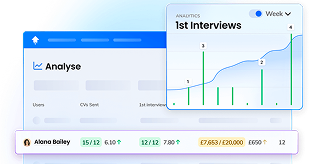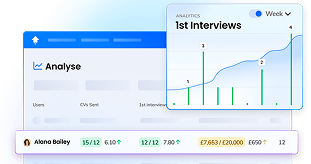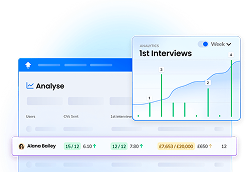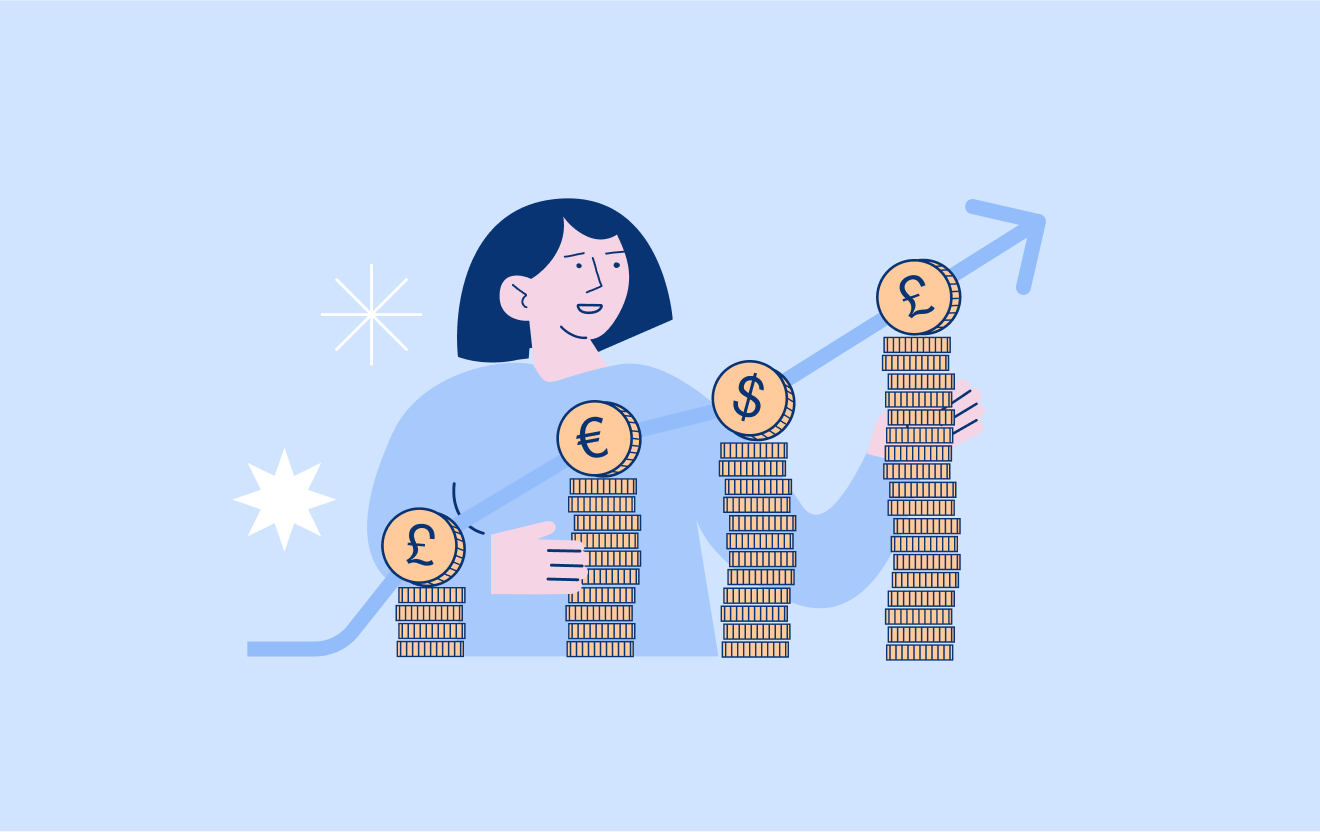Sales isn’t just about closing deals. It’s about managing sales performance, refining the sales process, and setting your sales team up for long-term success.
But many sales managers and sales leaders find themselves stuck in daily tasks, leaving little time to optimize sales strategies. The market is evolving. Customer expectations are changing. If you don’t adapt, you risk falling behind.
A strong sales strategy takes more than effort. It requires data-driven decisions, targeted sales incentives, and an efficient sales pipeline. To increase sales performance, teams must focus on key performance indicators like sales revenue, customer satisfaction, and customer retention.
So, how do you improve sales performance when time is limited? The key is to focus on actionable strategies that help you measure sales performance, increase sales productivity, and strengthen customer relationships.
From ongoing training to leveraging sales data, small changes can have a big impact. With the right approach, you can boost sales success and create a more efficient sales cycle.
Could 2025 be the year you take a laser-sharp focus on your sales team's performance? Now is the time to refine your approach, increase sales, and set your team up for success.
Here are 15+ powerful tips to help you take your sales performance to the next level.
Tip 1: Embrace Data-Driven Decision-making
Want to know how to improve your sales performance? Start with the data.
If you’re not deep in the data, you’re already on the back foot.
In 2024, it’s vital to use data analytics to supercharge your decision-making.
Ignore the data revolution, and you risk falling behind the competition.
To roll out informed, data-driven decision-making within your organisation, you must first implement a robust data infrastructure that makes collecting and analysing data easy for all decision-makers.
Start by looking at your sales goals and roadmap.
What do you need to achieve and by when?
Now, consider which sales metrics and key performance indicators can be used to track progress towards these goals.
For example, if your focus this year is upselling and cross-selling more to established customers, ‘percentage of revenue from existing customers’ is likely to be a key metric.
If you’ve just launched a new product or service and want to track its popularity, the ‘revenue by product or service’ metric will be important to you.
Is customer satisfaction at the top of your priority list for 2024? If so, you’ll want to track the ‘net promoter score’.
There are also a handful of metrics all sales managers should track for sales success. Think ‘total revenue’, ‘year-over-year growth’, and ‘average customer lifetime value’.
Once you’ve landed on your key metrics, you know what data you need to collect — but how can you effectively collect and analyse this data?
The data will most likely be collected using your existing tech stacks, such as your sales CRM, VoIP systems, sales enablement platforms, timesheet tools — and even social media.
The best option to easily analyse all this data is to employ software that acts as a single source of truth.

Sales performance software OneUp, for example, collates the relevant data from your tech stack and presents it in easy-to-understand visualisations on custom dashboards tailored to your goals.
It’s then very easy to see, at a glance, what your data is trying to tell you.
Tip 2: Implement Advanced CRM Tools
Sales improvement this year demands a tech stack equipped for 2024.
Gone are the clunky CRMs of the past few decades, and in their place are smart, sophisticated systems that streamline your sales processes, improve customer relationships, and employ AI to give you your time back.
A strong CRM system should improve your knowledge of your customers — ensuring you can tackle their pain points effectively and they never feel forgotten about.
How?
Look for a CRM that gives you a 360-degree view of every customer, from basic data like name and phone number to more complex information such as their relationship to others in your database.
It should also be easy to access previous interactions with this customer, with email exchanges, chat messages, customer service requests, and their contracts at your fingertips.
CRMs also allow for customer segmentation, invaluable in data-driven decision-making and tailored content. This enables you to analyse your sales pool better and run account-based marketing campaigns.
Investing in cutting-edge CRM tools can also improve customer retention, speed up communication, boost internal collaboration, and empower the sales team to anticipate customer needs better.
It’s worth implementing sales performance tools that integrate with your CRM to help you get the most out of them.
OneUp integrates with sales CRMs including Salesforce and HubSpot, drawing relevant data from these tools to allow you to analyse it easily.

Create custom dashboards, populated with data from your CRMs, that track your progress and your team members’ progress towards their goals. Quickly and easily report on any aspect of your data, with the ability to dive deep into figures from your CRM, VoIP, Sales Engagement, and Timesheets software. And save time on reporting with automated emails of your reports.
Moreover, you can also create leagues, missions, challenges and competitions to improve sales rep performance and celebrate when milestones are hit.
Tip 3: Enhance Sales Training Programmes
Against an ever-changing sales landscape, ongoing training is a necessity when it comes to how to increase sales rep performance.
Implementing a continuous sales training programme will improve sales performance, increase employee retention, and make reps feel valued.
Data should inform your training programme and adapt to market shifts.
It’s also important to make space for bespoke training for individual sales reps, who all join the business with different strengths and weaknesses.
The wonderful thing about training in 2024 is you can now get real-time feedback on how effective your program is.
Conducting training around closing deals with your team?
You can track the results by closely monitoring your team’s ‘win rate’ and ‘conversion rate’ over the next few months.
Want to get more granular?
Break these metrics down by individual sales reps. That lets you see who got it and who may need more support.
Employ custom training dashboards to make sure these results are transparent.
It’s essential to provide feedback to your sales reps on their performance using hard data and anecdotal examples. Handing your team the power to track their own results will help them see where they’re going wrong and motivate them to do better.
So, how are you going to train your team?
Are you picturing a PowerPoint in a stuffy boardroom?
While admittedly traditional, this is not the most effective way to engage your sales reps with your training material.
Instead, when considering how to improve your sales team's performance, employ a smart combination of modern training tactics, including:
- Roleplay
- Coaching
- Mentoring
- Shadowing
- Gamification
- External qualifications
Tip 4: Foster a Culture of Continuous Learning
But it’s not enough to simply run training programmes to improve sales performance.
You also need your team to be receptive to them.
You need them to want to learn.
This is why sales leaders must foster a culture of continuous learning within the sales team — effectively making upskilling a part of sales reps’ day-to-day.
The structured training detailed above also encourages informal knowledge-sharing sessions.
Sharing links to interesting articles in group chats, passing on useful learnings from sales conferences, and asking questions when a sales rep brings new information to the table are all ways you can lead by example.
Furthermore, in a culture of learning, sales reps should feel comfortable asking stupid questions without fear of judgement.
Tip 5: Leverage AI and Automation in Sales
What does the dawn of AI mean for sales reps and team leaders?
A huge chunk of their valuable time is back.
AI and automation continue to evolve, with multitudes of future innovations predicted. However, advanced sales productivity tools on the market in 2024 can already handle a lot of the heavy lifting.
In short — say goodbye to your spreadsheets and watch sales productivity soar.
AI excels at repetitive, high-volume — and, let’s face it, tedious — tasks, from prospecting and lead scoring to fielding FAQs and gathering data insights.
It performs all these tasks with an efficiency and accuracy impossible for a human to achieve.
So where exactly can AI and automation assist you?
- Data collection, analysis and visualisation
- Automated data reports
- Forecasting
- Prospecting
- Lead scoring based on previous interactions
- Sending automated reminders to prospects, leads, and clients
- Automatically updating your CRM
- Fielding FAQs
- Onboarding new clients
- Hiring, onboarding and training new sales reps
Tip 6: Focus on Customer Experience
The importance of the customer experience cannot be understated in the digital era. This is one of the most simple ways to improve sales performance.
Remember — if your customer experience contains even the slightest bit of friction, a wealth of competitors is available at the touch of a button.
It needs to be easy, convenient, and seamless.
So what should you be focussing on?
Response Time
Replying promptly to prospects, leads and clients should be a top priority for your sales reps.
If clients wait for an urgent project answer, they’ll most likely start considering other options.
They’re certainly not going to feel valued.
Long response times add unnecessary friction to the customer experience — and it’s such an easy fix.
In addition to setting your sales reps targets for speedy responses, an AI chatbot ensures most queries are answered immediately or sent to a sales rep.
The Human Touch
Back then, most B2B sales were closed with a handshake in an office or over lunch in a restaurant.
With many organisations now time-poor and looking to make savings, closing is commonly a digital experience.
This means sales reps must now overcome the distrust accompanying digital transactions.
Finding ways to build that relationship and adding a human touch to a digital process can go a long way in terms of both win rate and client retention.
This might mean jumping on a video call every now and then, adding personal anecdotes into emails, or offering to pop into the office when you’re in the area.
Accurate and Consistent Information
The last thing you want to do is confuse potential customers.
Ensure your sales reps know your products or services and that they go out there with a simple pitch and easy-to-understand sales assets.
The information they’re giving out must be consistent with the information on your website and in your marketing materials.
Streamline the Sales Process
Streamlining the purchasing process is all about removing obstacles to purchase.
This can mean reducing the number of steps to purchase for the customer and decreasing the work they need to put into buying your product or service.
It could also mean more clearly signposting your user journey, ensuring customers only deal with one sales rep throughout their purchasing process, and investing in multichannel tech so clients can rejoin their path to purchase on your website, by instant messenger, email, or over the phone.
Act on Client Feedback
Client feedback is invaluable to improving your customer experience.
Ensure there is a point in the customer experience where clients are asked to share their feedback. You can also use the contents of emails, phone calls, and instant messages as part of your qualitative data.
You should also collect data throughout the customer experience.
When are people dropping out of the customer journey?
How long are they lingering at each stage of the journey?
The qualitative and quantitative data from all clients over a defined period of time should then be collated and analysed.
For example, if your quantitative data highlights a trend of people dropping out within the ‘decision’ segment of the customer journey, and the qualitative feedback tells you they preferred your product offering but ultimately opted for a cheaper version from a competitor, you may need to work on communicating value for money or reconsider your price point.
Ask yourself:
How can you make moving from one stage of the customer experience to the next easier?
Can you speed up this process and shorten the sales cycle?
Tip 7: Optimise Sales Processes
Thanks to AI and automation, it’s never been easier to optimise your sales processes.
This is all about making efficiency gains that will save you time and resources.
Start by delving into your performance data.
Consider:
- Where are the bottlenecks in the sales cycle?
- Are there any leaks in the sales cycle?
- Does the prospecting process result in highly qualified leads?
- What tasks are your sales reps spending most of their time on?
- Do these tasks effectively contribute to achieving your sales goals?
- Are your reps spending a large amount of time on administrative tasks?
Once you’ve identified issues with your current processes, you can start addressing them.
Here’s an example.
When you look at your individual sales reps’ performance data, you notice one team member is spending a lot of time at the top of the sales cycle — on prospecting and qualification.
Despite this, their efforts are not resulting in highly qualified leads — their conversion rate is the lowest on the team.
When you look at the prospects they’re contacting, it becomes clear they’ve taken a scattergun approach and are reaching out to a wide variety of people, many of whom are worlds’ away from your ideal customer profile.
This means it’s time for some training. Drill the ideal customer profile together, and invite them to shadow you or an experienced sales rep as they prospect. You may also invest in an automation tool that can do much prospecting and qualifying work for them.
The time they save from inefficient prospecting and qualifying will allow them to put in more time later in the sales cycle — closing deals with more qualified leads.
Tip 8: Personalise Sales Approaches
In 2024, clients expect personalised content.
Think about it. Whether you’re shopping online, browsing Netflix, scrolling through social media, or discovering new music on Spotify, the platforms we interact with most in our daily lives, all make data-informed decisions about what content to show us.
In the same way, sales reps must tailor their strategies to individual customer needs and preferences.
This is easy enough when you’ve only got a handful of customers on the books — but most organisations are working with a large client base.
This is where personalisation at scale comes in.
Personalisation at scale is when an organisation analyses large amounts of data about clients to deliver a tailored customer experience based on specific needs, preferences, and behaviours.
It can be achieved through clever segmentation.
Clients can be segmented into several groups, including but not limited to:
- Industry or sector
- Type of business
- Buying behaviour
- Size of organisation
- Geographical location
- Specific needs
- Where they are in the sales cycle
The optimal way to segment your clients will depend on the type of organisation you work for, the type of clients you work with, and your business goals.
Once you have segmented your clients into groups, you can tailor your sales approach to each segment. This is a lot more achievable than attempting to tailor your sales approach to each and every client fully.
Tip 9: Set Clear and Achievable Goals
Your sales team needs to have something to strive for.
But giving them a goal like “increase sales” or “bring in more revenue” doesn’t get you far.
Why?
While reps always strive to increase sales and revenue, they have nothing specific to aim for — there’s no tangible target. This makes it hard to measure their progress, and there’s no big moment of celebration when they achieve a goal.
Instead, setting SMART goals and conscientiously measuring progress towards hitting them is vital.
True SMART goals hit all of the following criteria:
- Specific
- Measurable
- Achievable
- Relevant
- Time-Bound
Here are five examples:
- Bring in £X revenue or above from [date] to [date]
- Increase your win rate to X% by [date]
- Pitch [new product] to [X number] of existing clients within [time period]
- Make [X number] of cold calls every [day/week/month]
- Spend [X amount] of time prospecting every [day/week/month]
You should use SMART goals to get your team to take the actions you want, whether working towards a huge team goal like significantly boosting revenue or tackling an individual pain point such as reluctance to cold call.
Either way, your sales targets should directly or indirectly feed into your overarching business goals. You should also look at historic sales data to ensure your target is realistic.
Once you’ve set your SMART sales targets, you need to get team buy-in.
And this starts with clear communication.
Set up custom dashboards to track progress towards each goal and then hold team meetings to communicate team targets and one-to-ones to communicate individual goals.
Clearly communicate:
- What the goal is
- When the team/sales rep should hit it by
- Any milestones along the way
- The incentive for hitting the goal
- How the team can track their progress
- Why you have chosen to set that goal
- How the target contributes to overall business goals
Lay out your SMART goals and metrics within your action plan for sales improvement.
Tip 10: Encourage Collaborative Team Environment
By its very nature, sales attract highly competitive individuals.
And while competition can be an extremely useful motivational tool — you need your team to collaborate too.
Why?
Collaboration boosts efficiency, increases customer satisfaction, and allows for valuable knowledge sharing. Every team member brings their own strengths and weaknesses to the table, and by leveraging their collective skills and expertise, you should ultimately boost revenue.
So encouraging collaboration is important when it comes to improving sales team performance.
But how can you encourage your competitive sales reps to work with their colleagues rather than only trying to outshine each other?
- Set team goals with group incentives rather than individual targets where team members compete against each other. Prominently display custom dashboards in the office, tracking the team’s joint progress towards these goals.
- Create space for information sharing in meetings. For example, ask different team members to present on specialist subjects or speak about their professional success stories
- Establish peer-to-peer mentoring schemes where more experienced sales reps are tasked with supporting your greener hires
- Acknowledge and reward collaboration. If collaboration is a priority, then highlight successful examples of collaboration within your team, and incentivise your team to work together
- Invest in a tech stack geared towards collaboration. This means transparent data tools that can be shared across the whole team, collaborative documents that numerous sales reps can work on simultaneously, and instant messaging functions.
Tip 11: Utilise Social Selling Techniques
In 2024, sales reps cannot afford to ignore social media — even in B2B sales.
Platforms frequently used by professionals, such as LinkedIn or X, allow sales reps to build authentic connections with prospects.
Instead of the awkward small talk at the top of a cold email, salespeople can share valuable insights and engage prospects in genuine conversions. After all, social media profiles do much more to humanise sales reps than email addresses.
When done right, social selling grabs the attention of your target audience and builds trust.
Then you should be able to move them from the very top of the sales funnel to the next stage.
Here are some ideas to improve sales performance through effective social selling:
- Make sure your social media profile and your team's are optimised for social selling. For example, ensure they are professional, reflect your brand, and outline your value proposition
- Join groups. Find your target audience by joining LinkedIn groups surrounding your industry or sector.
- Invest in social listening tools to find your audience and discover more about their needs and pain points
- Aim for thought leadership. Share content that adds value for your target audience, and join in discussions around such topics. Done right, this builds credibility and authority.
- Share your wins. Got a success story to share? Don’t hold back.
Tip 12: Regularly Review and Adjust Sales Strategies
The market changes.
Your client roster changes.
The sales team changes.
So why would you keep your sales strategies the same?
Reviewing your sales strategy on at least a quarterly basis will keep your team at the forefront of the market.
Your action plan to improve sales performance needs to be adapted based on market trends, the type of businesses you’re selling to, and the strengths of your sales team.
This is why data-driven sales strategies are paramount.
Data will show you precisely what is and isn’t working — allowing you to adjust and adapt your strategy before it’s too late.
Tip 13: Invest in Sales Enablement Tools
Want to know how to use technology in sales to improve performance?
Well, sales enablement tools have come on leaps and bounds in the past few years.
Typically, the rudimentary sales enablement platforms of the past allowed you to store all your client information in one place.
Now they’ve been joined by various future-ready tools offering AI and automation functions, sales performance management platforms, sophisticated data capabilities, communication facilities and more.
These tools support sales teams engaging with prospects in a variety of ways, including:
- Email campaign automation
- Data collection and analysis
- Records of every interaction a buyer has with a client
- Sales pipeline overviews
- Personalised customer experiences
- Cross-team communication
- Team collaboration
- Direct messaging with clients
- Content creation
Tip 14: Emphasise Value, Not Just Features
Modern sales pitches focus on the value your product and service — and your sales rep’s expertise — can bring to your client.
Sales leaders must develop a strong value proposition and train their teams to communicate this clearly and effectively to prospects, leads, and clients.
Your value proposition should essentially be a clear reason why a client should buy a product or service — and why they should buy it from your business.
This can be achieved in three simple steps:
- Clearly explain how the product or service meets a need
- Convey its specific added benefits
- Communicate why your product or service is superior to similar offerings on the market
When communicating your value proposition to the client, take a storytelling approach. This is much more likely first to engage the decision maker's attention and then ensure they remember the details.
You should also always focus on the client, their needs, and their pain points. Your primary focus should be on how your product and service can help the client overcome hurdles and hit their goals. How can you benefit the wider business and the decision-makers themselves?
Using case studies and real-life examples of how your product or service has worked for previous clients is a great technique for building trust and bringing your value proposition to life.
Tip 15: Implement Effective Incentive Programmes
Here’s something that’s not changed over the years — most salespeople are very money-driven and hungry to succeed.
And like generations of sales leaders before you, you can use this to your advantage.

Indeed, implementing effective incentive programmes is one of the top activities to improve sales performance.
The difference is that now there are tech tools on the market that can boost the effectiveness of your incentive programs — ultimately getting you more bang for your buck.
When designing motivational incentive programmes for sales teams, consider the following:
- Not every sales rep is motivated by the exact same incentives. Find out what motivates your team and use this information to decide which incentives to offer.
- Utilise sales performance improvement software like OneUp to keep incentives in mind. Display custom dashboards prominently in the office, so your team can keep track of their progress towards their incentive (and payday).
- Offer variety. The same incentives can lose their power after a while. This could be as simple as tiered bonuses for achieving certain milestones or different incentives for every goal, e.g. financial, vouchers, trips, gig tickets, team experiences, and social events.
- Gamify the process. Gamification increases engagement with incentive schemes. From simple trackers towards a goal, with milestones, badges and points along the way, to a fully immersive gaming experience — a whole variety of software supports this on the market.
- Don’t forget about recognition. From praise in one-to-one meetings to highlighting good work in a public setting, acknowledgement from sales leaders and company leadership goes a long way regarding motivation.
Tip 16: Prioritise Mental Health and Wellbeing
In sales, we’ve not always been good at caring for our reps’ mental health and wellbeing.
This is despite working in a profession that can have a significant impact on mental health and wellbeing due to the competitive, high-pressure environment and the constant rejection.
Indeed, anxiety, burnout and depression are some of the most commonly reported mental health concerns among sales teams, according to the Mental Fitness in Sales research programme.
In the 2022 State of Mental Health in Sales report, 63% of sales reps reported they suffer with their mental health.
Indeed, if you’re wondering how to improve sales team morale, you should start with wellbeing initiatives.
The report suggested that factors including a clear career path, boundary setting, and embracing more vulnerability within sales strongly correlated with better mental health and improved sales performance.
So when it comes to how to build a high-performing sales team, sales leaders must be trained in how best to support their reps’ mental health and wellbeing and help them to build resilience from day one.
Initiatives should aim to support employees’ physical, emotional, financial, psychological, and social well-being.
Such initiatives can include:
- Providing healthy snacks
- Reinforcing the importance of sick days
- Implementing walking meetings
- Setting up mental health resources — such as mental health first aiders or access to counsellors — for employees
- Normalising sabbaticals and extended periods of leave
- Encouraging walking meetings
- Organising social events
- Rolling out an employee recognition programme
- Providing company merchandise that contributes to healthy habits such as water bottles or workout clothes
- Ensuring salary increases keep up with the cost of living
- Regularly investing in employees’ personal development
- Making time for team-building activities
- Implementing flexible working hours
- Launching regular employee wellbeing surveys
- Offering healthy perks such as yoga classes, gym memberships, or meditation in the office


















